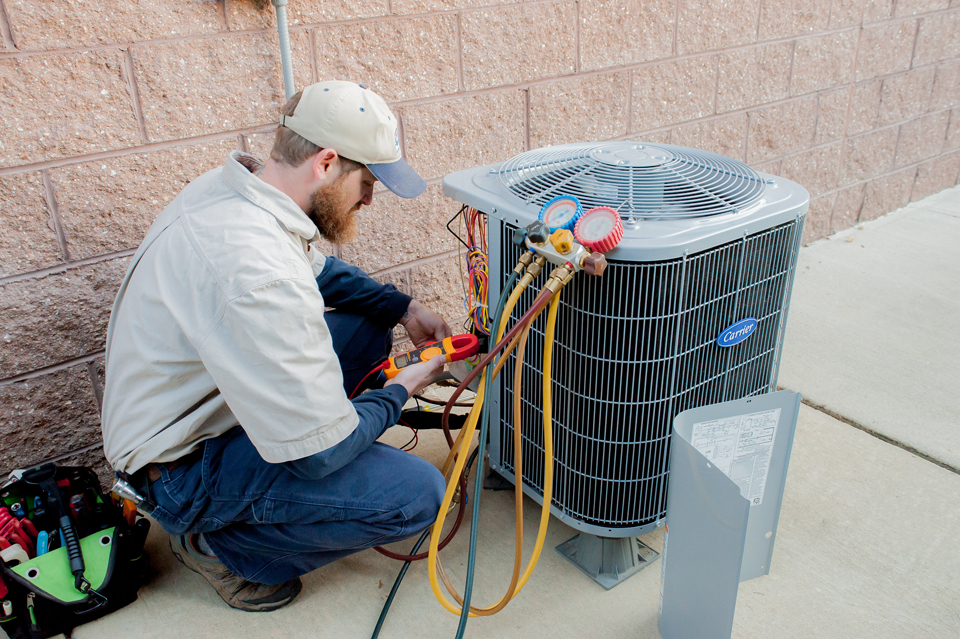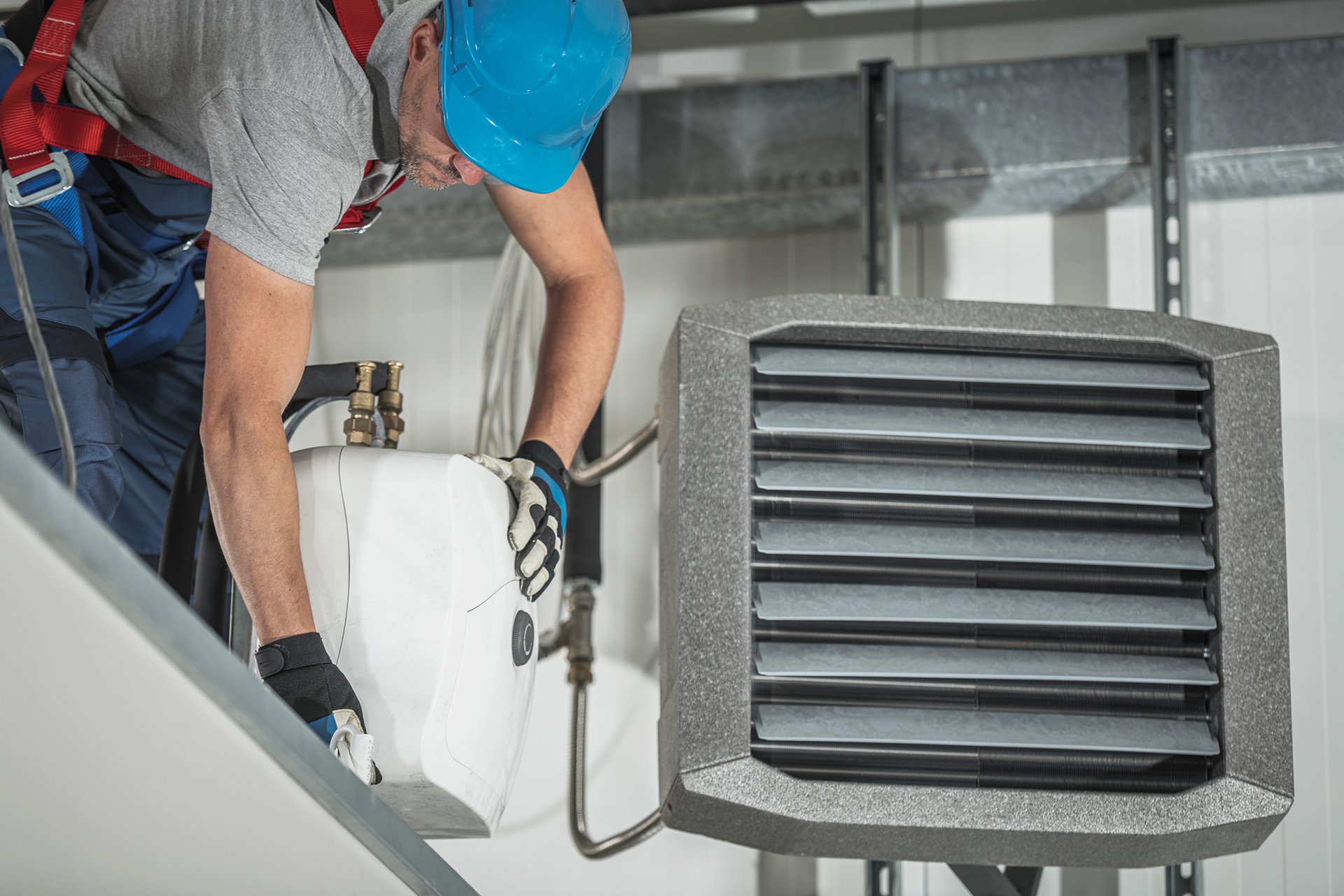Seasonal Reasons for heat pump installation ooltewah tn
Seasonal Reasons for heat pump installation ooltewah tn
Blog Article
Just How a Heatpump and Furnace Interact to Maximize Your Home's Heating Performance
Recognizing exactly how a warm pump and heater collaborate is important for home owners seeking effective heating remedies. Each system has its staminas, giving a well balanced approach to home comfort. The heatpump excels in modest temperature levels, while the furnace supplies rapid warmth during severe cold. This synergy not just minimizes power expenses but likewise enhances the life expectancy of both appliances. What factors influence this cooperation, and exactly how can property owners maximize their advantages?
Comprehending Warm Pumps: How They Work
Many individuals may be strange with their internal workings, warm pumps play a crucial role in modern heating systems. These gadgets run by transferring warm from one place to an additional, using the principles of thermodynamics. In cooler months, a warm pump extracts warm from the outside air, ground, or water, and transfers it inside your home to warm the home. Conversely, throughout warmer months, it can turn around the process, working as an air conditioning system by removing heat from inside to the outside.Heat pumps contain an evaporator, growth, compressor, and condenser valve. The cooling agent within the system absorbs warmth as it vaporizes at low temperatures and stress. The compressor after that increases the pressure and temperature of the refrigerant, permitting it to release warm as it condenses. This reliable process can considerably reduce power consumption compared to typical heating methods, making heatpump a sustainable option for climate control in homes.
The Function of Heating Systems in Home Heating
Furnaces play a vital role in home heating by giving a dependable resource of warmth during the chillier months. They run by producing warmth through burning or electrical resistance, dispersing it throughout the home by means of air ducts or glowing systems. The performance of a heater is commonly measured by its Yearly Gas Usage Effectiveness (AFUE) rating, which shows how successfully the system converts gas into heat.Furnaces can use numerous energy resources, consisting of natural gas, oil, electrical energy, or propane, permitting house owners to pick one of the most suitable option for their requirements. Unlike heatpump, which may struggle in extreme cool, heating systems preserve constant efficiency, making certain that interior temperatures continue to be comfortable despite outside conditions. Additionally, modern furnaces commonly come outfitted with innovative technology, such as variable-speed blowers and wise thermostats, enhancing their performance and responsiveness. This versatility makes heating systems an important element in all-inclusive home heating methods.

Advantages of Utilizing Both Equipments Together
Integrating the toughness of both heating systems and warm pumps can cause an extra effective and effective home heating option. Using both systems allows house owners to make the most of the heatpump's energy effectiveness during milder temperature levels while relying on the heater for even more extreme cold conditions. This twin strategy can significantly lower power prices, as warm pumps consume less electrical power than standard heating approaches when temperature levels are moderate.Additionally, using both systems together can boost comfort levels in the home. Warm pumps can give constant, even home heating, while heating systems can promptly raise ambient temperature levels when required. Moreover, the combination of both systems can expand the lifespan of tools by minimizing damage on each device, as they share the workload. Inevitably, house owners can take pleasure in a balanced, cost-effective heating option that changes flawlessly to differing climate condition, making sure a cozy and inviting home throughout the cold weather.
Exactly How Warmth Pumps and Furnaces Enhance Each Other
They produce a complementary heating system that optimizes effectiveness and convenience when home owners integrate warm pumps and furnaces. Warm pumps operate by transferring heat from the outdoors air or ground, making them extremely effective in moderate climates. They succeed during milder temperature levels, supplying cost-effective heating. On the other hand, heaters generate heat through burning or electric resistance, supplying strong, prompt heat during severe cool conditions.The mix of these 2 systems permits vibrant modifications based on temperature changes. Throughout warmer months or milder winter days, the heat pump can take the lead, saving power and lowering costs. As temperatures drop, the heating system can flawlessly engage, making sure consistent heat throughout the home. This harmony not just maximizes energy use yet also boosts the life expectancy of both systems, as each system runs within its excellent performance range. Together, they develop a well balanced setting that adapts to try this out differing climate demands.
Maximizing Performance: Tips for Homeowners
Homeowners can enhance their heating effectiveness with numerous useful strategies. Developing a regular upkeep routine, incorporating wise thermostat innovation, and implementing effective insulation and sealing solutions are essential steps. These steps not only enhance convenience yet also reduce energy costs.
Regular Upkeep Arrange
To assure optimal home heating effectiveness, developing a routine upkeep routine is important for any home. Property owners need to focus on routine evaluations of both warm pumps and furnaces to ascertain peak efficiency. This includes changing air filters each to 3 months, as stopped up filters can greatly reduce performance. Furthermore, scheduling expert maintenance a minimum of as soon as a year enables service technicians to determine and deal with potential problems prior to they rise. Home owners ought to likewise clean the heatpump's outdoor system to prevent top article particles build-up that can impede air movement. By sticking to a regular upkeep routine, home owners not just enhance their heating systems' effectiveness yet also expand their life-span, leading to better comfort and decreased energy expenses throughout the chillier months.
Smart Thermostat Combination
Incorporating a wise thermostat into a home heater can significantly boost energy performance, specifically as it permits for exact control over temperature settings. These devices can learn the homeowner's schedule and preferences, automatically adjusting the temperature to optimize convenience while reducing power usage. For example, they can lower home heating during times when the home is unoccupied, lowering unneeded intake. Numerous smart thermostats likewise give real-time energy use information, allowing property owners to make enlightened decisions regarding their home heating practices. Additionally, remote accessibility using smartphone apps allows individuals to adjust settings from anywhere, making sure the home is warm upon return. Overall, clever thermostat integration not only improves convenience however substantially adds to energy savings and performance.
Insulation and Securing Solutions
Smart thermostats play a critical duty in power effectiveness, but their performance can be substantially improved by correct insulation and securing solutions. Home owners ought to focus on shielding attics, walls, and floors to minimize warm loss. High-grade insulation products, such as spray foam or fiberglass, can considerably improve thermal resistance. Furthermore, sealing voids around windows, doors, and air ducts protects against chilly air seepage and warmth retreat. Weatherstripping and caulking are efficient methods for attending to these leaks - heat pump service. Routine evaluations for air leakages, along with making use of blower door examinations, can help determine issue areas. By buying insulation and sealing, homeowners can optimize the efficiency of their heater, ultimately resulting in lowered power intake and lower energy expenses
Typical Misconceptions Regarding Warm Pumps and Furnaces
What misunderstandings surround warm pumps and heating systems? Numerous people erroneously think that heatpump are ineffective in colder environments. Actually, modern-day warm pumps are created to operate successfully also in low temperature levels, giving reliable heating throughout winter. Another typical misconception is that furnaces are constantly much more efficient than warm pumps. This depends on the certain energy sources and efficiency scores of the units in question. Some might additionally think that making use of both systems concurrently is unnecessary, however as a matter of fact, this combination can enhance heating efficiency, especially throughout extreme weather. Additionally, individuals typically assume that heatpump require continuous maintenance, when actually, they have similar upkeep requires to conventional home heating systems. By exposing these misconceptions, homeowners can make more informed decisions concerning their home heating alternatives, ultimately causing enhanced convenience and power efficiency in their homes.
Maintenance Factors To Consider for Combined Solutions

Frequently Asked Concerns
Can Warmth Pumps Job Efficiently in Very Cold Climates?
Heatpump can over here have a hard time in very chilly climates because of decreased effectiveness and heat removal constraints. Nevertheless, improvements in innovation have actually led to versions created for far better efficiency in such problems, enhancing their feasibility in harsh atmospheres.
For How Long Do Heat Pumps and Furnaces Commonly Last?
Heatpump typically last 15 to 20 years, while furnaces have a life expectancy of 15 to thirty years. Routine upkeep can extend their long life, making sure efficient operation and reducing the demand for early replacements.

What Is the Typical Cost of Installing Both Equipments?
The average cost of installing both a heatpump and a heater commonly ranges between $5,000 to $10,000 - furnace replacement. Factors influencing this cost include system size, installation intricacy, and regional labor prices
Exist Tax Obligation Incentives for Making Use Of Energy-Efficient Home Heating Equipments?
Many home owners ask about tax obligation motivations for energy-efficient heating systems. Different government and state programs typically use discounts or credits, urging the adoption of sustainable innovations to minimize power usage and promote ecological obligation.
Just how Do I Pick the Right Dimension Heatpump and Heater?
Choosing the right size warm pump and heater includes determining the home's square footage, thinking about insulation top quality, and assessing neighborhood climate. Consulting a professional can assure perfect system efficiency and power efficiency based on certain needs. ductless mini splits. Recognizing just how a warm pump and furnace work together is necessary for homeowners seeking effective home heating solutions. In chillier months, a warm pump removes heat from the outside air, ground, or water, and transfers it inside your home to heat the living area. When house owners integrate heat pumps and heating systems, they develop a corresponding heating system that makes the most of efficiency and convenience. Warmth pumps run by moving heat from the outside air or ground, making them highly reliable in modest environments. Warmth pumps can have a hard time in exceptionally cool climates due to lowered efficiency and heat removal restrictions
Report this page